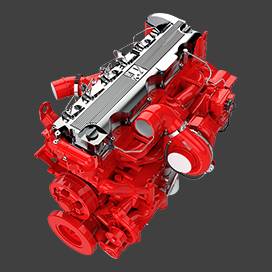Nov . 11, 2024 05:12 Back to list
Cross Reference Guide for Truck Brake Drum Specifications and Compatibility
Understanding Truck Brake Drum Cross Reference
When it comes to maintaining the safety and efficiency of commercial vehicles, one critical component is the truck brake drum. The brake drum plays an essential role in the vehicle’s braking system, providing friction necessary to slow or stop the vehicle. Over time, these components can wear out and require replacement. This is where understanding the cross-referencing of brake drums becomes crucial for fleet managers, mechanics, and truck owners alike.
What is a Brake Drum?
A brake drum is a cylindrical component that houses the brake shoes. When the driver applies the brakes, the brake shoes expand against the inner surface of the drum, creating friction that slows the wheel's rotation. This critical component must be manufactured to exact specifications to function properly, ensuring the vehicle can stop efficiently, especially under heavy loads commonly carried by trucks.
Why Cross Reference?
Cross referencing involves matching one component with similar parts from other manufacturers or models to find a suitable replacement. Given the wide variety of truck models and manufacturers, it's not uncommon for parts to have multiple identifiers. A cross-reference guide helps mechanics and fleet managers identify compatible brake drums quickly, ensuring they choose the right part for the job. This practice is particularly beneficial when original parts are not readily available, allowing for more flexibility in sourcing replacements without compromising safety or performance.
How to Cross Reference Brake Drums
1. Part Numbers The first step in cross-referencing brake drums is to locate the original part number. This number is usually stamped on the drum itself or can be found in the truck’s service manual. Once you have the part number, you can consult a cross-reference database or guide to find compatible alternatives from different manufacturers.
2. Specifications Pay attention to the specifications of the original brake drum, including diameter, width, hub diameter, and bolt patterns. These measurements are essential for ensuring compatibility. Different suppliers may offer brake drums with varying designs or materials, but the fundamental geometric dimensions must match.
3. Manufacturer Information Different manufacturers may have different part numbers for the same brake drum. Thus, knowing the original equipment manufacturer (OEM) can simplify the search for cross-reference options. Manufacturers often have cross-reference charts to help identify compatible parts quickly.
truck brake drum cross reference

4. Online Resources Several online databases and resources compile various manufacturer part numbers, making cross-referencing easier. Websites dedicated to commercial truck parts often have search functionalities that can help locate the equivalent brake drum based on dimensions or part numbers.
5. Consulting Professionals If in doubt, it's always advisable to consult a professional mechanic or parts distributor who specializes in truck parts. They can offer insights into compatibility and may have first-hand knowledge of the best replacement options.
Importance of Using Compatible Parts
Using cross-referenced brake drums ensures that the vehicle operates safely and effectively. Mismatched components can lead to premature wear, diminished braking performance, and potential safety hazards. For instance, if the brake drums are too small, they may overheat, while those that are oversized may cause uneven wear on the brake shoes.
Benefits of Proper Cross Referencing
1. Cost-Effectiveness Finding a compatible brake drum through cross-referencing can often be more economical. Brands may price their parts differently based on branding, and cross-referencing could reveal a more cost-effective alternative without sacrificing quality.
2. Availability Sometimes OEM parts may be on backorder, or their availability may be limited. Cross-referencing allows fleet managers to procure necessary parts promptly, avoiding costly downtime.
3. Improved Safety When parts are replaced with the correct cross-referenced item, the risk of brake failure diminishes, improving overall safety for drivers and others on the road.
Conclusion
The cross-referencing of truck brake drums is a crucial aspect of vehicle maintenance and safety in the commercial trucking industry. Understanding how to navigate part numbers and specifications can save time, enhance safety, and reduce costs. Whether you're a fleet manager or a truck owner, knowing how to effectively cross-reference brake drums can ensure your vehicle remains on the road, operating at peak efficiency. As technology continues to evolve, staying informed and utilizing available resources will remain essential for truck maintenance and safety.
-
Scania Brake Drums: OEM Quality for Optimal Safety & Durability
NewsAug.16,2025
-
R.V.I: Advanced Remote Visual Inspection for Precision
NewsAug.15,2025
-
Discover HYUNDA: Innovative Vehicles, Equipment & Solutions
NewsAug.14,2025
-
R.V.I: Unlock Advanced Insights & Real-time Performance
NewsAug.13,2025
-
Kamaz Brake Drum: Durable & Reliable for Heavy Duty Trucks
NewsAug.12,2025
-
Heavy Duty Iveco Brake Drum - Premium Quality & Safety
NewsAug.11,2025
